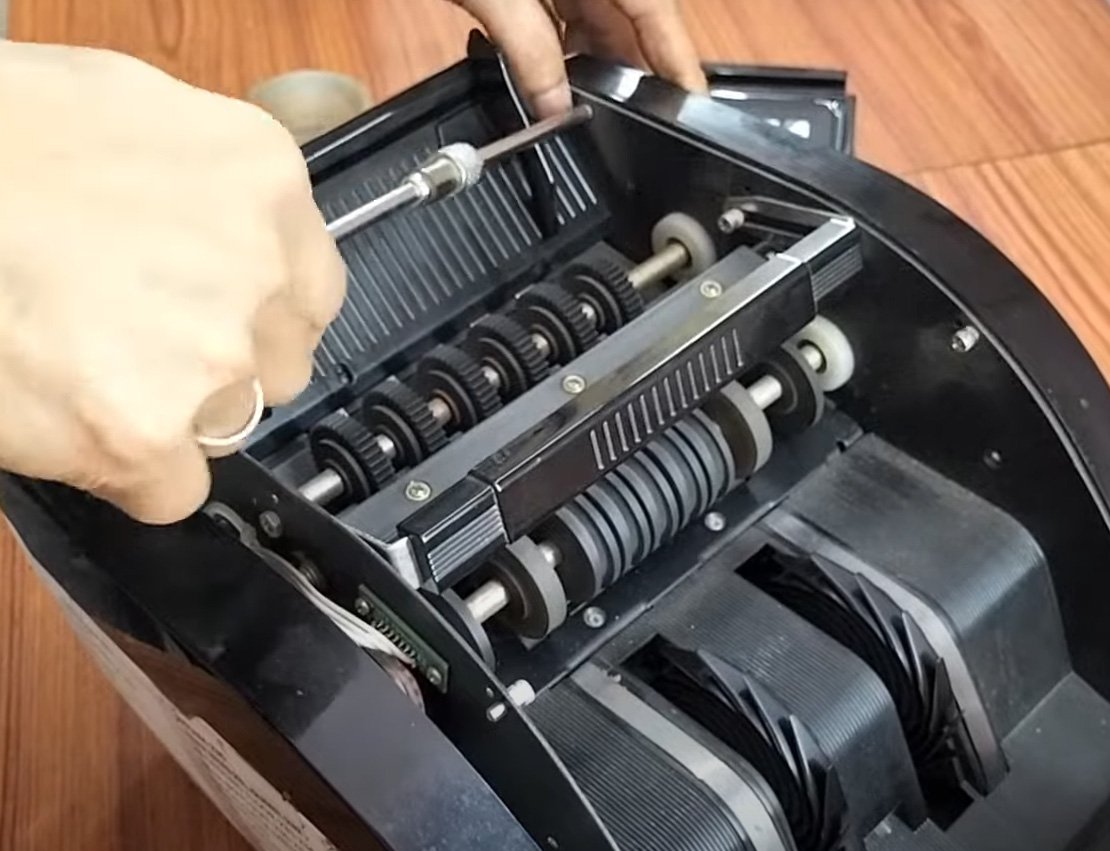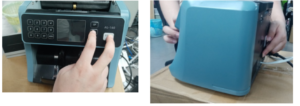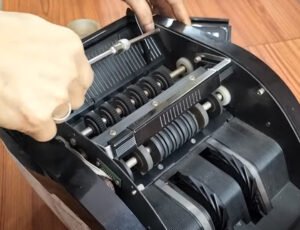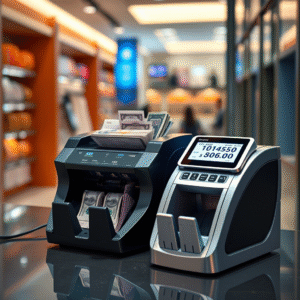Let’s talk about the real cost of a broken-down bill validator or a malfunctioning coin hopper. It’s not just the repair bill. It’s the lost transaction, the frustrated customer walking away, and the hit to your client’s operational reliability. For distributors and service providers, the quality of your maintenance program isn’t a back-office detail—it’s your frontline value proposition. The core of that program? The parts you use. Moving from generic components to a certified OEM (Original Equipment Manufacturer) parts supply isn’t an expense; it’s the most direct strategy to protect your clients’ revenue and your reputation.

Why Generic Parts are a Gamble with Your Client’s Bottom Line
It’s tempting. A third-party part can be 20-30% cheaper upfront. But that initial “savings” is often a mirage that disappears the moment the part fails prematurely.
Think about a simple currency sensor. OEM sensors are calibrated with proprietary software to read security features with extreme precision. A generic sensor might look the same, but it lacks that precise calibration. The result? Increased miscounts, higher jams, and a dramatic spike in “no credit” errors where valid notes are rejected. This directly impacts the counting speed and accuracy your clients depend on for their daily reconciliations.
The failure often isn’t immediate. It’s a slow degradation. A non-OEM thermal print head might work for a few months, but then it starts producing faint receipts that fade over time. For your client, this means disputes, unverifiable transactions, and accounting headaches. You’re not just replacing a part; you’re dealing with a cascade of operational problems that the cheap part caused. The data from service calls in the retail and banking sectors shows a clear pattern:
| Part Type | Common Generic Part Failure Mode | Direct Impact on End-User Operation |
|---|---|---|
| Bill Validator | Inaccurate recognition, frequent jams | Slower checkout times, customer frustration, lost sales |
| Coin Mech Motors | Overheating, premature wear | Cashier downtime, inability to give change |
| Printer Mechanisms | Misalignment, poor print quality | Unreadable receipts, transaction disputes |
| Power Supplies | Voltage inconsistency | Random resets, data corruption, hardware damage |
The real cost is the second service call, the lost trust from your client, and the potential damage to the machine itself. That “bargain” part can easily end up costing double what a certified OEM part would have.
The Direct Link Between OEM Parts and Maximized Uptime
Uptime is revenue. This is non-negotiable in industries like casinos, retail banking, and self-service kiosks. Certified OEM parts are engineered for one thing: predictable, reliable performance in specific machines.
They are not just “compatible”; they are identical to the parts the machine was built with. This eliminates the guesswork and testing time for technicians. When a service tech arrives with an OEM part, they know it will fit perfectly and function as intended. There’s no filing, no forced installations, no worrying about firmware conflicts.
This precision translates directly into faster repair times. A swap that might take 30 minutes with an OEM part can turn into a two-hour troubleshooting session with a generic one, trying to figure out why it’s not working. For a vending machine operator with a machine down in a high-traffic office tower, that 90-minute difference is hundreds of dollars in lost sales. For a bank with a malfunctioning ATM, it’s a direct hit to customer service.
The reliability of OEM parts also extends the mean time between failures (MTBF). This isn’t a theoretical concept; it’s a measurable metric. Data from service networks shows that maintenance programs built on OEM parts can reduce repeat service visits by up to 40% compared to those using a mix of generic components. This means your clients’ equipment stays online, processing cash and generating value.
Real-World Impact: OEM-Driven Maintenance Across Industries
This isn’t just theory. The difference is tangible across every sector that relies on cash handling.
- Retail & Hospitality: A national convenience store chain recently switched its maintenance partners. The new provider mandated certified OEM parts for all their POS terminal and cash recycler repairs. In the first year, they reported a 22% reduction in repeat service calls related to cash acceptance. For a store processing thousands of transactions daily, this meant shorter lines at peak times and a more reliable checkout experience.
- Gaming & Casinos: In a casino, a malfunctioning ticket-in/ticket-out (TITO) machine or bill validator is a direct leak of potential profit. A major casino group’s internal audit found that machines maintained with OEM parts had an average uptime of 99.3%, while those with a history of third-party parts sat at 94.1%. That 5.2% difference represents a significant amount of lost gaming revenue.
- Financial Services & Self-Service Kiosks: An operator of self-service toll and parking kiosks tracked machine performance over 24 months. Kiosks maintained with OEM coin mechs and validators processed, on average, 15% more transactions between failures than their generically-maintained counterparts. This reliability is critical in unattended environments where a service call is costly and logistically complex.
The pattern is clear: standardized, certified parts lead to predictable, profitable operations.
Building a Smarter, More Profitable Maintenance Program
For you as a distributor, promoting an OEM-based maintenance program is a powerful business development tool. It moves the conversation from price to value. You’re not just selling a repair; you’re selling reliability.
Start by auditing your own service operations or your partners’. What is the current mix of parts being used? Track the data on first-time fix rates and machine uptime post-repair. This data is your most powerful sales asset.
Next, structure your client offerings around uptime guarantees or service level agreements (SLAs) that are explicitly backed by the use of certified OEM parts. This demonstrates confidence and positions your service as a premium, high-reliability option. You can offer tiered programs:
- Basic: Emergency repair with mixed parts.
- Premium: Scheduled maintenance and repairs using 100% certified OEM parts, with guaranteed response times and a higher uptime SLA.
By leading with the data and the proven outcomes, you attract clients who value their operational continuity over a short-term discount. You become a strategic partner in their profitability, not just a vendor.
Professional Q&A
Q: Our inventory costs are a concern. How can we maintain a comprehensive OEM parts supply without tying up too much capital?
A: This is a common challenge. The solution isn’t to switch to generics, but to optimize your OEM supply chain. Partner with OEM distributors who offer reliable, fast-shipping programs or consignment inventory models. Many now provide 24-48 hour shipping on a vast range of parts, reducing the need for you to stock every single component. Utilizing their logistics strength is smarter than compromising on part quality and facing the higher costs of downtime.
Q: How do we convincingly justify the higher initial cost of OEM parts to a price-sensitive client?
A: Shift the focus from part cost to total cost of ownership (TCO). Present a simple calculation: Compare the cost of one OEM repair against the cost of two repairs with a generic part (including the second service call labor, travel, and the client’s operational downtime). Use real data from your service history—like the 40% reduction in repeat visits—to show that the cheaper part often leads to a more expensive overall outcome. Frame it as insurance against predictable, costly downtime.
Q: With the rise of cashless payments, is the maintenance of cash handling equipment still a priority?
A: Absolutely. While cashless is growing, cash remains a dominant or significant payment method in many markets and demographics. Furthermore, the cash handling equipment that is in use is often older and requires more diligent maintenance. Ensuring these critical machines are ultra-reliable is more important than ever, as they serve customers who primarily use cash. A reliable cash system is a key part of a diversified and inclusive payment strategy.




